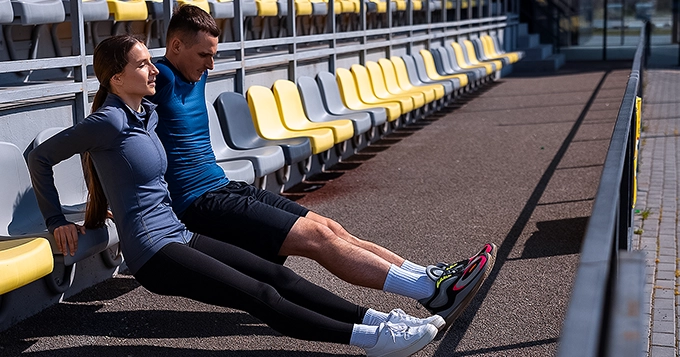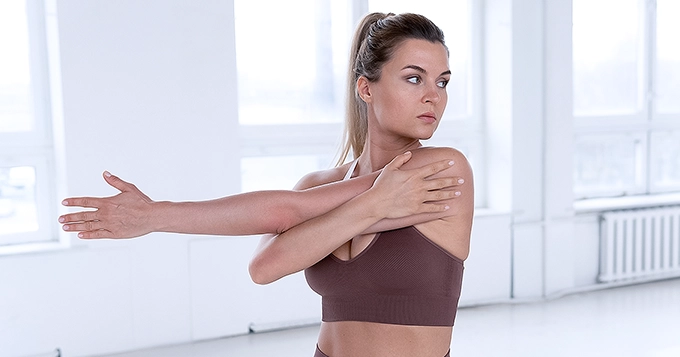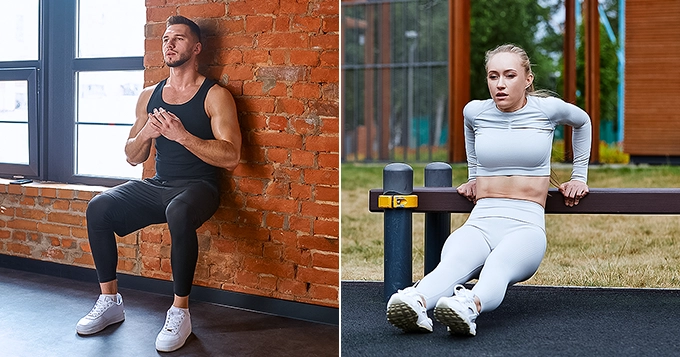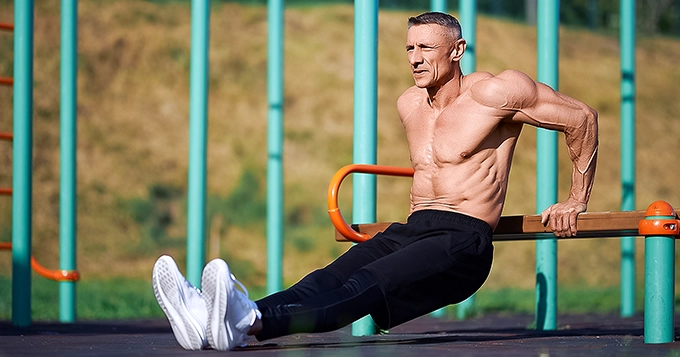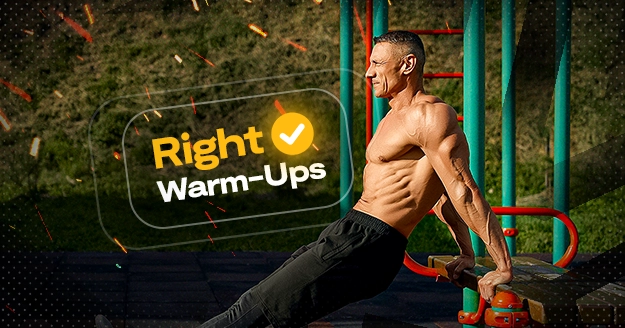Are you ready to kickstart your workout routine with a burst of energy and prevent those dreaded muscle strains?
It’s time to dive into the world of warm-up exercises and discover the key to activating your muscles effectively.
The right warm up exercises before workout can make all the difference in maximizing your exercise performance and minimizing your risk of injury.
Why Warm Up Before Workout?
Before we delve into the specifics of workout warm up, let’s understand why warming up is crucial. Think of your muscles as a rubber band: when cold, they’re stiff and prone to snapping. However, with the right warm-up, you can increase blood flow to your muscles, enhance flexibility, and improve your overall performance.
Here’s the basic science explaining muscle activation during your gym warm up routine:
1. Initially, during the warm-up, the brain receives signals indicating muscular tension and begins to adapt.
2. Electrical signals from the brain activate the muscles.
3. Subsequently, the body prepares to handle increased muscular and joint tension.
4. Activating more muscle fibers increases “motor power,” improving performance and efficiency.
Types of Warm-Ups
Two primary types of warm-ups exist: static and dynamic.
Static Exercise: Static exercise entails the contraction of skeletal muscle without altering its length, thus earning the alternative term, isometric exercise (iso = same, meter = length). This type of exercise elicits a cardiovascular response distinct from that seen in dynamic exercise.
Dynamic Exercise: Dynamic exercises engage your muscles and joints in an extensive range of motion, employing continuous movement to prime your body for activity. This improves performance and reduces the risk of injury by enhancing the blood flow to your muscles.
Differences:
- Static exercises involve maintaining a muscle contraction without changing its length, while dynamic exercises involve moving muscles and joints through a range of motion.
- Static exercises are beneficial for isometric strength and stability, while dynamic exercises are more effective for improving agility, mobility, and cardiovascular health.
- According to research, dynamic warm-ups improve power and strength performance, unlike static stretching warm-ups, which do not have the same effect.
The optimal approach involves initiating your pre-workout routine with basic stretches and progressing to dynamic movements that mimic the muscles you’ll be targeting during training. Additionally, you can incorporate movement and dynamism into your stretching postures.
The Benefits of a Proper Warm-Up
By incorporating the right warm-up exercises into your routine, you’ll reap a host of benefits:
- Reduced risk of injury: Properly warmed-up muscles are more flexible and less prone to muscle tears and strains.
- Improved performance: Activated muscles perform better, allowing you to lift heavier, run faster, and jump higher.
- Enhanced flexibility: Dynamic stretching helps improve your range of motion, enabling you to move more freely during your workout.
- Mental readiness: A thorough warm-up primes your mind for the upcoming workout, boosting focus and concentration.
Warm-Up Exercises to Activate Muscles for Better Workout
It’s essential to perform warm up exercises before workout to get your joints and muscles ready for the impending exercise.
180-Degree Arm Turn
Extend your arms and lift them to chest level, palms together. Rotate your right hand 180 degrees behind your body while simultaneously opening your chest and shoulders. This movement activates your arm, core, and back muscles. Repeat the exercise with your other arm.
Arm Circles
Engage your upper body muscles with arm circles. While standing with your arms extended to the sides, move your arms in circles, progressively getting bigger as you go. This exercise warms up your shoulders, chest, and back, enhancing mobility and flexibility.
Assisted Sit on One Leg
Position one foot on your knee and lower yourself into a squat, utilizing support as needed to maintain balance. Keep your core engaged and aim to descend as deeply as possible. This activation exercise targets your glute muscles.
Alternatively, you can perform single-leg squats with the aid of a chair or bench.
Bench Dips
Locate an elevated surface and execute dips by supporting your legs on the ground.
For a more manageable warm-up, you can bend your knees, adjusting the difficulty according to your fitness level.
Bodyweight Squats
Prime your lower body muscles for squats, lunges, or any lower body exercises with bodyweight squats. Stand with your feet shoulder-width apart, squat down as if you are about to sit on a chair, then return to standing. Bodyweight squats activate your glutes, quadriceps, and hamstrings while improving hip mobility.
Deep Lunge Transition
While in a push-up position, bring your right foot beside your right hand and lower your shoulders as far as possible, repeating this movement three times to engage your leg and core muscles.
Next, shift your body weight by placing your right foot between your hands, with your right hand positioned on the right side of the leg. This action activates your hamstrings and glute muscles.
Repeat the same sequence with the opposite leg for several repetitions.
Downward-Facing Dog to Push Up to The Upward-Facing Dog
Begin by assuming the downward dog position, with hands and feet on the floor and hips raised to form an inverted V-shape. Then, transition into a push-up with hands positioned close to your chest, lowering slowly without touching the floor. Next, lift your head and chest upward into the upward-facing dog position, ensuring your legs remain off the ground.
High Knees
High knees elevate your heart rate while also engaging your lower body muscles. Stand and alternate lifting your knees as high as possible while pumping your arms. This exercise activates your quadriceps, hip flexors, and core, improving agility and coordination.
Jumping Jacks
Start your warm-up with a classic exercise that increases your heart rate while engaging multiple muscle groups. Jumping jacks work your arms, legs, and core while improving coordination and boosting circulation.
Leg Swings
Loosen up your lower body with leg swings. Stand straight and swing one leg forward, then backward in a controlled motion, then switch sides. This dynamic stretch targets your hamstrings, quadriceps, and hip flexors, preparing them for more intense movements.
Plank
Finish off your warm-up with a plank to activate your core muscles and stabilize your spine. Start in a push-up position. Keep your hands under your shoulders, engage your core, and hold a straight line from head to heels. Planks improve core strength and endurance, which are essential for maintaining proper form during your workout.
Pulsating Lunges
Assume a lunge position, lowering your body as deeply as possible. Then, perform pulsating movements within half of your mobility range for several repetitions before returning to the starting position.
Push-Ups
Get your chest, shoulders, and arms ready for action with push-ups. Start in a push-up position with your hands shoulder-width apart. Then, lower your body until your chest almost touches the floor, then push back up. Push-ups activate your upper body muscles and core, preparing them for pressing movements.
Shoulder Opener
Interlock your hands behind your body and strive to reach as high as possible. Repeat this movement several times.
If you encounter difficulty initially, don’t hesitate to seek assistance from your gym personal trainer or a friend.
Slow Knee Circles
Begin by bringing your knee close to your chest and then perform circular motions. The goal is to open up your leg, activating muscles that may be underutilized.
Supermen Raise
Lie on your stomach. Keep your legs and arms extended at shoulder width. Press your stomach against the ground and lift your limbs as high as possible while engaging your core muscles.
